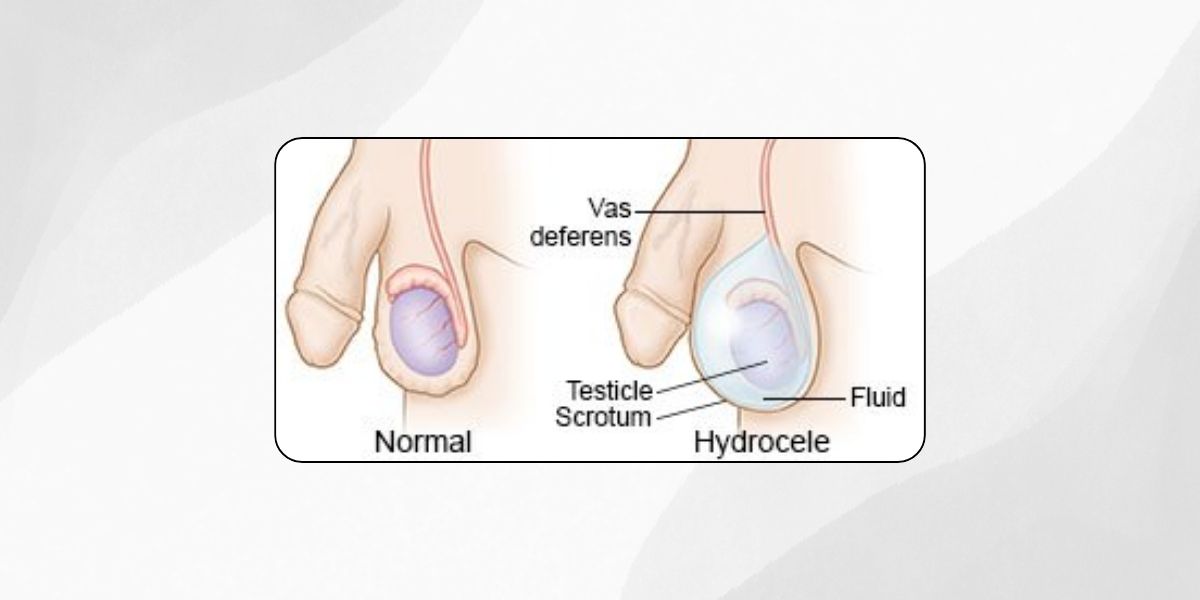Hydrocele, a condition characterized by the accumulation of fluid in the sac surrounding the testicle, can affect both children and adults. While the fundamental nature of the condition remains the same, there are significant differences in its causes, symptoms, diagnosis, and treatment between pediatric and adult patients. Understanding these distinctions is crucial for effective management and treatment.
Understanding Hydrocele: An Overview
Hydrocele occurs when fluid collects in the thin sheath surrounding a testicle. This condition can develop in males at any age, from infancy to adulthood.
Causes of Pediatric Hydrocele
In infants, hydroceles are often congenital. They are present at birth and usually result from an incomplete closure of the processus vaginalis. This leads to the fluid leaking into the scrotum from the abdominal cavity. Typically, pediatric hydroceles resolve on their own within the first year of life without requiring treatment.
Risk Factors for Pediatric Hydrocele
Several factors can increase the likelihood of a hydrocele in infants, including:
- Premature birth
- Low birth weight
- Genetic predisposition
- Maternal health factors during pregnancy
Causes of Adult Hydrocele
In adults, hydroceles are generally acquired rather than congenital. They can develop due to injury or inflammation within the scrotum. Conditions such as epididymitis, orchitis, or even testicular tumors can lead to the development of a hydrocele. Additionally, trauma or surgery in the groin area can also be contributing factors.
Risk Factors for Adult Hydrocele
Several factors can increase the likelihood of developing a hydrocele in adults, including:
- Infections (such as sexually transmitted infections)
- Injury to the scrotal area
- Previous surgeries (like hernia repairs)
- Aging, which can weaken the tissue in the scrotum
Symptoms: Pediatric vs. Adult Hydrocele
Symptoms in Pediatric Hydrocele
In infants and young boys, hydroceles are usually painless. The primary symptom is a swollen scrotum, which may increase in size over time. The swelling is typically soft and may change in size throughout the day.
Symptoms in Adult Hydrocele
In adults, hydroceles can vary in size and may cause discomfort or pain. The affected side of the scrotum becomes swollen and may feel heavy. In some cases, adult hydroceles can cause a dull ache or a feeling of pressure in the lower abdomen. Unlike pediatric hydroceles, adult hydroceles do not typically change size during the day.
Diagnosis: Pediatric vs. Adult Hydrocele
Diagnosing Pediatric Hydrocele
Diagnosing hydrocele in infants usually involves a physical examination. The doctor may shine a light through the scrotum (transillumination) to see if there is fluid around the testicle. In most cases, no further testing is required, as pediatric hydroceles often resolve on their own.
Diagnosing Adult Hydrocele
In adults, the diagnostic process can be more complex. In addition to a physical examination and transillumination, doctors may order an ultrasound to rule out other conditions such as hernias, tumors, or infections. An ultrasound provides a clear image of the structures within the scrotum and can help determine the cause of the swelling.
Treatment: Pediatric vs. Adult Hydrocele
Treatment Options for Pediatric Hydrocele
In infants, hydroceles often resolve without intervention within the first year of life. If the hydrocele persists beyond this period or becomes large and uncomfortable, surgical intervention may be necessary. The surgical procedure, known as hydrocelectomy, involves making a small incision in the scrotum to drain the fluid and close the processus vaginalis.
Treatment Options for Adult Hydrocele
For adults, treatment options depend on the underlying cause and severity of the hydrocele. If the hydrocele is small and not causing symptoms, it may be monitored over time. However, if it becomes large or painful, surgical intervention may be required.
- Aspiration and Sclerotherapy: In some cases, doctors may recommend draining the fluid with a needle (aspiration) followed by injecting a sclerosing agent to prevent fluid from reaccumulating.
- Hydrocelectomy: This surgical procedure involves removing the sac that contains the fluid, providing a permanent solution to the problem.
Hydrocele, while a common condition, varies significantly between pediatric and adult patients in terms of causes, symptoms, and treatment. Understanding these differences is essential for effective diagnosis and management. Whether congenital in infants or acquired in adults, hydroceles are generally treatable and have a good prognosis with appropriate medical intervention.


